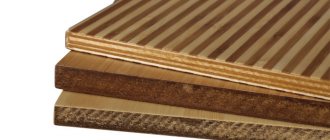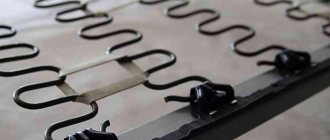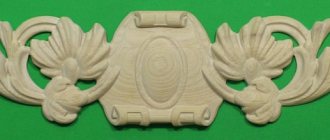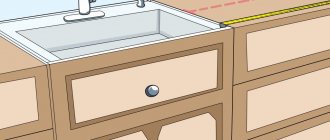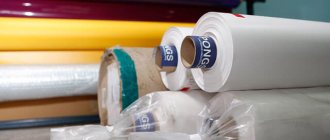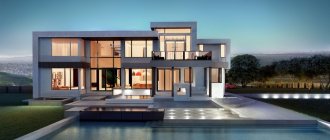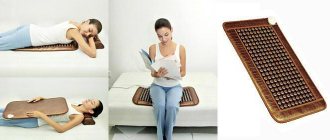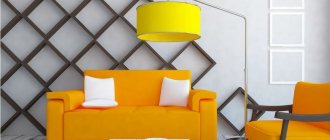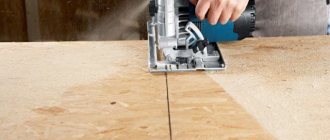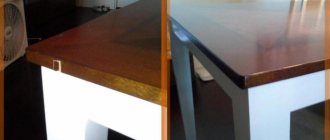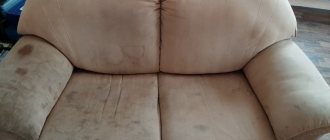To breathe easier
Of course, if checks confirm that the furniture is dangerous, it will have to be disposed of. But if the low concentrations of formaldehyde released do not pose a risk to life and health, but the smell is still there, you can try to reduce your exposure to carcinogens on your own. To do this you need:
- Do not clutter the room with furniture. The smaller the room, the less furnishings it needs. You need to limit yourself to only the essentials.
- If possible, allow the new furniture to sit for a couple of weeks in a non-residential area (spare room).
- Ventilate the room more often. This will reduce the concentration of harmful formaldehyde and improve the health of the air.
- Get an air purifier (or washer). Or regularly (the more often the better) carry out wet cleaning.
- Article on the topic
The silent domestic killer. What dust causes cancer? It is advisable to also purchase an air conditioner. Or keep the windows open. At normal room temperature, the release of harmful fumes from furniture is half as strong as at +25 degrees and above. - Get indoor plants that neutralize harmful substances. These include ivy, ficus and fern.
- Place the aquarium near new furniture. The advice is somewhat brutal, but nonetheless working. Formaldehyde dissolves well in water, so if the fish survive, it means there are no harmful fumes in the air of your room.
- Quit smoking and prohibit household members from doing so. Especially indoors. Why would you further increase the amount of formaldehyde? But there is a lot of it in tobacco smoke.
3 more things to consider when updating your interior
In any case, it is advisable not to update all the furniture at once, but to do it slowly, in parts. This is quite reasonable: it will hit your pocket less, and you won’t once again test your health “to the limit.”
If you nevertheless decide to replace all the furniture in a room or apartment at once, then it makes sense to ventilate this room more often at first and spend less time in it.
But if you have old, good-quality wooden furniture, and it is not damaged by fungus and other pests, then maybe the best option is not to buy anything at all, but just leave the old one? Moreover, it can be restored. One way or another, everyone chooses for themselves what is more important to them - updating the interior at any cost or maintaining health.
By the way, since you are concerned about the topic of toxic furniture, you should pay attention to other harmful materials in your room. There may be no less danger to health, if not more.
Today they read:
Useful eco-tips:
Health effects of cheap furniture
Is chipboard furniture harmful to health? It largely depends on the manufacturer and what adhesives he uses. The formaldehyde contained in the stove was included in the register of “possibly carcinogenic substances to humans” in 1998. If all furnishings are made of chipboard, then the concentration of the toxin exceeds the norm by 1.5-2 times.
Upper respiratory tract diseases
The harm of formaldehyde manifests itself in the form of an allergic reaction. The person becomes nauseous, dizzy, has difficulty breathing, and the skin breaks out in a rash. Symptoms are especially severe in hypotensive patients.
Causes toxin and frequent headaches. In acute formaldehyde poisoning, cough, runny nose, suffocation, swelling of the pharynx and lungs, and shortness of breath are observed. In the chronic form of poisoning, nasopharyngeal lesions, allergic reactions, and asthma attacks occur. Even a healthy person can feel a deterioration in their condition, and treatment will require much more money than buying quality furniture.
Eye irritation
Is furniture made from chipboard harmful to health? Unfortunately, even lamination did not make the furniture board completely safe.
Formaldehyde also causes irritation in the mouth, larynx, eyes, and internal organs (intestines and stomach). With prolonged exposure to the body it becomes more and more dangerous.
Symptoms of mucosal irritation:
- redness of the eyeball itself and the area around it;
- blurred vision;
- blurred vision;
- pain in the eyes, including cutting pain when blinking;
- constant lacrimation;
- dizziness and headaches;
- drowsiness;
- tachycardia.
It has been proven that formaldehyde released from furniture can cause myopia in children.
Diseases of the nervous and reproductive system
The health hazards of laminated chipboard furniture can manifest themselves in various “areas.” Exposure to formaldehyde contained in the stove can cause insomnia and thalamic syndrome. Regularly being in a room where there is MDF or chipboard can provoke depression, depression, increased fatigue, and poor health. As a result, performance decreases and lethargy appears. Convulsions, hand tremors may occur, and in cases of severe poisoning, loss of consciousness and coma.
The reproductive system also suffers, especially in women. The carcinogen not only accumulates in the body, disrupting the menstrual cycle, but can also be transmitted to the child. Installing an air purifier in the room will partially reduce the impact.
Other health problems
The most serious danger of furniture made from cheap materials is the risk of malignant neoplasms, leukemia (blood cancer) and nasopharyngeal cancer.
In addition to the above problems, there are:
- Eczema or pale skin.
- Gastrointestinal diseases: ulcers, liver and kidney damage, toxic hepatitis.
- Loss of body weight.
- Severe chills, trembling.
- Constant dry cough.
- Blood pressure disorders.
Such furniture can be hazardous to health; this should be taken into account before purchasing attractive cheap products, which are offered in huge quantities by manufacturers.
Factor #5: choose the size of the panels
Today there is no unified system of standards and sizes adopted for the production of MDF panels. Their length, width, shape are determined by the manufacturer and may vary. The building materials market offers three options for the shape of MDF boards:
Among them, the most common option is rack and pinion. The shape is reminiscent of a clapboard board; it is mounted on the wall in a similar way - on top of the guides.
Less popular options are a set of wall cladding made from squares or cladding the walls with large sheet panels. The latter is used in the decoration of public, commercial, retail and other large premises.
The thickness of MDF panels can vary from 6 to 14 mm. The thicker the material, the higher its strength.
Panel length - usually offered by manufacturers in two options - 1300 mm and 2600 mm. This poses some transportation requirements. Sufficiently long and thin “boards” must be placed flat to avoid cracks after transportation.
The width of the panels can vary - 153 mm, 198 mm, 200 mm, 325 mm. The choice of width takes into account the height of the room and is determined by calculations - how many whole rows of MDF will fit on the wall of the room.
For children's room
The process of making children's furniture can also take place using chipboard or MDF boards. Of course, the most optimal material in this case would be natural wood. But the reason for the high cost is that not everyone can afford it. And then chipboard and MDF boards can act as an alternative. Also, later doubts may still arise as to what the difference is between MDF and laminated chipboard and which is better.
Let's take a closer look at MDF. They have a medium density and wood-fiber structure. For its production, small sawdust is used. The bonding process is carried out using paraffin. In terms of environmental friendliness, this material is the most suitable for children's furniture. A similar material is used to produce backs for chairs, cribs, and tables. Also, MDF boards are indispensable when obtaining cabinets, shelves and various parts.
How to choose the material for MDF furniture is indicated in the article.
The cost of such children's furniture will be much more expensive than that made from chipboard. But the indicators of strength, environmental friendliness and reliability of MDF material are much higher.
How much a 16 mm chipboard sheet weighs is indicated in the article.
Although chipboard boards have one important drawback, due to which many parents refuse to install furniture based on it in the nursery. This disadvantage lies in formaldehyde resins, which release elements harmful to health during evaporation. At the same time, it is these resins that give the slab fire resistance.
In conclusion, it should be noted that a product made from MDF boards inspires more confidence among people, but parents are not always ready to see chipboard material in their baby’s room. The reason is that this material is not environmentally friendly.
What sizes of MDF panels there are are indicated in the article.
Danger! Natural wood!
Let's go back to the standards. For the manufacture of furniture for residential premises, it is allowed to use chipboard and MDF of class E1 and E0, and these materials are allowed even for the manufacture of children's furniture. Class E2 is not recommended for the manufacture of household furniture and is not even produced in some countries.
What do these standards mean? They indicate how much formaldehyde is contained in the finished board:
- E0 - up to 5 mg per 100g of dry slab;
- E1 - up to 10 mg per 100 g;
- E2 - from 10 to 30 mg per 100 g.
What do salt and chipboard have in common?
What happens if you combine two poisons to form a new substance? Correct: a new substance with unique properties. A colorful proof of this is kitchen salt, ordinary sodium chloride.
Chlorine is a poisonous asphyxiating gas. Pure sodium is flammable, and as a result of its violent reaction with water, a caustic alkali appears. But the combination of these two substances - sodium chloride - plays an important role in human life. So important that people on average consume up to 5 kilograms of salt per year. With all this, no one even thinks about associating it with chlorine or sodium - the characteristics are not the same.
Now let's return to formaldehyde resins. This is also a completely new substance, which is made from toxic, flammable and carcinogenic phenol and formaldehyde. Truly hardened resin is a completely harmless substance. Only unreacted formaldehyde residues pose a danger.
With all this, it should be taken into account that most of this carcinogen evaporates during the production of plates that undergo high-temperature treatment. Next, these products undergo certification, which ultimately determines the emission class (amount of release) of formaldehyde.
Well, the final step in processing furniture chipboard and MDF is lamination - coating with melamine film or special varnishes, which almost completely eliminate the interaction of the board with the environment. In other words, even those formaldehyde residues that are allowed by the standards are sealed inside the slab and do not actually evaporate into the atmosphere (with the exception of the open ends of the furniture). But what happens if the coating is destroyed?
Phenol
Phenol is a very common aromatic substance. In its pure form, it has the appearance of crystals with a faint smell of gouache - or, to be clear, this gouache smells of phenol. Smoked products also smell of phenol and its derivatives, since smoking practically represents the saturation of the product with aromatic hydrocarbons. It is they who assign the appropriate smell to products and they also have a disastrous effect on the smallest organisms. Unfortunately, not only on them.
Phenol is poisonous. When it comes into contact with the mucous membrane, it causes powerful irritation, and when inhaled, it disrupts the functioning of the nervous system (an animal organ that serves to transmit information important for the body to the brain)
cells. In addition, it simply reacts with various substances that are in our body. The aromatic compounds formed during all this can accumulate and cause various disturbances. There is evidence that at least some of them are carcinogenic, although there is no evidence that phenol itself is carcinogenic to humans.
The great news is that modern chipboard contains no phenol. It is done using urea-formaldehyde resins, which in principle do not contain phenolic compounds. Phenol-formaldehyde resins are now used only for the production of FSF plywood and laminated plywood based on FSF, but plywood of these brands is prohibited from being used indoors.
Details
Materials that are resistant to fire
After use, refractories are sent for recycling. Most often, products of this type are rectangular in shape and light in weight, making them optimally suitable for different linings
At the moment, there is a decrease in the production of conventional refractories, as more and more attention is paid to the production of special mortars and concretes that are resistant to high temperatures
Methods for making fire-resistant materials
The materials have a ceramic base, and are made from refractory nitrides, borides and oxides and have a high level of chemical inertness, as well as strength. Carbon compounds are also often used. Refractories retain their qualities when exposed to temperatures from +1650 degrees and are used in a large number of areas where there is a need to carry out some actions under given conditions.
As you can see, this is an excellent material for repair work.
Hardener
Some people who are afraid of chipboard and MDF remember the hardener. Previously, citric acid was used as it, but at the moment it is synthetics. And if it’s synthetic, then you can’t expect anything good from it, and chipboard is harmful.
It is necessary to emphasize here that the citric acid that was used earlier was also synthetic - it was not extracted from lemons in any way. Now, instead of acid, they use ammonium chloride (in other words, ammonia) or its mixture with ammonia water.
The amount of hardener in chipboard or MDF is less than 1% of the total mass of the board, and at the same time it is almost completely consumed as a result of curing the resins. The part that is not consumed does not pose any threat. Obviously, drinking saturated ammonia is very harmful, but even Finnish licorice candies contain more ammonium chloride than chipboard. Therefore, you don’t have to worry that your MDF walls will poison you - they are just as harmless as solid wood walls, but at the same time they are much cheaper.
Formaldehyde
Formaldehyde is also not a gift, but it is far from phenol. It is the aldehyde of methanol and formic acid, the most common compound of the class of aldehydes. In ordinary terms, it is a volatile, simply soluble gas with a pungent odor.
Formaldehyde also causes damage to the nervous system and has a local irritant effect; In addition, it is absolutely carcinogenic for animals and humans. Fortunately, it is difficult to inhale any significant amount of formaldehyde under normal conditions due to its volatility. It is very difficult to experience any harm to health due to its residual content in chipboard or MDF. Chipboard with emission class E1 contains no more than 10 mg of formaldehyde per 100 grams of completely dry material, while it constantly evaporates - both during storage in the warehouse, and during transportation, and absolutely always, starting from the moment of pressing. As a result, you can inhale any significant amount of formaldehyde only in an unventilated hangar filled with stacks of chipboard or MDF.
Harmfulness of chipboard: myth or reality
The state and supervisory services impose high safety requirements on products widely used in everyday life and construction. Furniture, decoration and other household and household items must be made from materials that are safe for the population.
What does this have to do with chipboard? The most direct. In the production of boards, melamine, urea-formaldehyde or phenol-formaldehyde resins are used as a binder. As a result of certain reactions, particle board almost constantly releases a volatile compound that is toxic to humans - formaldehyde.
Its harm does not even need to be proven once again - it is officially recognized as a carcinogen, which, with constant exposure in a certain concentration (percentage in the air), can cause various disorders, poisoning, diseases, including by no means harmless dermatitis and dangerous cancer.
However, it will not be possible to completely get rid of this incredibly harmful substance. Even wooden furniture or decoration contains a certain amount of bound compounds of formaldehyde, phenol, benzene, let alone the plastic we love so much, used in all areas - from household appliances to constantly used dishes.
According to Russian and European legislation, the maximum permissible content of formaldehyde in the air for chipboards is determined by the emission class:
- E1 – no more than 8 mg per 100 g. dry chipboard inclusive;
- E2 – up to 30 mg inclusive.
These indicators depend not only on the quality of raw materials, but also on external processing. Harm can be significantly reduced by reducing the emission area. To do this, it is enough to cover the sheet with laminated film on all sides, and trim the ends with edging tape.
Furniture for the residential sector, commercial and other institutions is produced from slabs of the first category. A material with a minimum indicator and all-round cladding can be used to produce children's or hospital furnishings.
Second class slabs without external finishing may only be used in repairs for decorative finishing cladding. Otherwise, the harm of second-rate material manifests itself in a deterioration in health, the appearance of headaches, asthma attacks, signs of poisoning and other consequences.
Chipboard factories are well aware of this, so their product range always includes products with different emission classes. Another thing is that manufacturers of economy-class furniture do not always use the appropriate raw materials in the manufacture of their products. But it's easy to check:
Carefully inspect the surface and edges of the furniture - if the film bubbles and the ends are not covered with anything, then most likely the cladding is homemade, not factory-made, therefore, slabs that do not meet the standards were used; After unpacking, pay attention to the smell. The sharp, literally knocking-down “plastic” smell of formaldehyde indicates the low quality of the chipboard used; Ask about certificates. There is nothing wrong with asking the supplier for a sanitary and hygienic certificate, on the back of which the regulatory and practical release of formaldehyde compounds must be indicated, as well as the testing period and the validity period of the certificate.
There is nothing wrong with asking the supplier for a sanitary and hygienic certificate, on the back of which the regulatory and practical release of formaldehyde compounds must be indicated, as well as the testing period and the validity period of the certificate.
The harm of formaldehyde resins has been proven, but this does not mean that you need to completely abandon chipboard. It is enough to take a responsible approach to choosing products made from wood-based materials and not skimp on your own health.
Kitchens made of MDF, how environmentally friendly and safe are they compared to kitchens made of solid wood?
The furniture market, especially the kitchen furniture market, is becoming more and more oversaturated with supply every year, and the buyer is becoming more and more picky. Now it is not enough for the buyer to simply have beautiful and high-quality furniture; he is paying more and more attention to the environmental friendliness of the materials from which the furniture is made. According to the already established opinion of the overwhelming majority, the standard of environmental friendliness is furniture made from natural solid wood, and modern materials, such as MDF, are inferior to solid wood. Is it really? No not like this! Let's look at it in detail and in order.
What is MDF?
What is MDF and how environmentally friendly is it? Wikipedia gives us the following definition: Medium Density Fiberboard (MDF; sometimes translated as MDF) is a board material made by dry pressing small wood chips at high pressure and temperature. Urea resins modified with melamine are used as a binding element. This ensures very low formaldehyde emissions, comparable to those of natural wood (formaldehyde emission class - E1). ... The density of the material ranges from 600 kg/m³ to 800 kg/m³. The main indicator of the environmental friendliness of the material is the low release of formaldehyde into the air, or its absence. In accordance with Russian GOST, there are two classes of formaldehyde emission - E1 and E2. MDF belongs to class E1. This is a class that is officially recognized as safe for the production of furniture, including children's. You will say “these are just numbers and recommendations with which you want to reassure us. And you compare the formaldehyde emission indicators of MDF with the indicators of the “eco-friendly standard” - natural solid wood. Doesn’t wood have any formaldehyde at all?” Willingly! Let's compare. Few people know that natural wood also emits formaldehyde. Here are the official numbers. Solid oak (the main species for the production of furniture facades) emits formaldehyde 0.75 mg/m3 during the drying process. And already dry, when heated to 400C, it emits 0.5 mg/m3, which classifies it as E2! That is, pure solid oak emits more formaldehyde than MDF and officially belongs to a lower safety class. As you can see, MDF has even surpassed solid wood in terms of environmental friendliness.
Kitchens made of MDF and solid wood from Kitchengood.
We (experts) began to understand the issue, and when we first found these numbers, we were surprised ourselves and checked them several times, turning to different sources. And after checking everything, we couldn’t help but write this article. We invite you to visit our store, where you can choose a kitchen to suit your taste, because we have both kitchens made of MDF and kitchens made of solid wood.
Author of the article Samarin K.A. The article was written specifically for kitchengood.ru, full or partial copying without the permission of the author is prohibited.
MDF kitchens - modern eco-friendly materials
Source: kitchengood.ru
Signs of cheap furniture
The health of children and adults is interconnected with the furniture they use. Cheap products often contain formaldehyde, a gas that can accumulate in the body and is difficult to remove from it. Negative manifestations are associated with a person’s immunity: the stronger it is, the longer the effect will be less noticeable. At risk are children, the elderly, and those who suffer from chronic diseases.
Scratches and chips
Furniture made from cheap materials that is harmful to health becomes even more dangerous if chips and scratches appear on its surface. Toxic substances evaporate through open areas. To minimize the risk, repair damage as quickly as possible.
It is recommended to cover the ends of chipboard or MDF boards; this will reduce the level of toxic emissions into the air, but cannot completely get rid of it. Painting and varnishing are also allowed, all this will make the products less harmful. However, even in this case, furniture made from cheap materials will be inferior in environmental friendliness and quality to products made from natural wood.
Strong smell
The characteristic unpleasant odor from new chipboard furniture causes discomfort, since it will be felt in the room for a long time - from a week to a month. Its appearance is due to the fact that toxic substances are used in the production of cheap furniture: phenol, formaldehyde, ammonia, benzene. Furniture made from fiberboard and MDF is considered safer than options made from chipboard, however, it can also cause serious problems: bronchitis, asthma, allergic reactions, acute respiratory infections, dermatitis.
Regularly being in a room with a large number of cheap pieces of furniture can cause loss of energy, bad mood, depression, insomnia, and loss of appetite.
Dangerous fumes of formaldehyde and phenol
The smell from furniture in the apartment is due to the fact that synthetic resins, formaldehydes and phenol are used in the production of boards from wood waste. They emit toxins that are hazardous to health.
It is not easy for an ordinary person to determine their presence, but the following signs will help:
- Presence of a strong unpleasant odor.
- Constant headaches, general malaise when staying indoors for a long time.
- Symptoms of phenol poisoning include: coughing, sneezing, dizziness. In particularly severe cases, a person may even lose consciousness.
If an unpleasant odor persists for more than a month, contact Rospotrebnadzor to conduct an examination and determine whether there is a violation of the maximum permissible concentration of toxins.
Lining is an environmentally friendly, durable material for decorating a country house
The design of any beautiful and comfortable house with a harmonious and cozy interior, be it a multi-story brick mansion that allows you to forget about the bustle of the city throughout the year or a small wooden house for the seasonal residence of two or three people, includes dozens, or even hundreds of different construction materials. and finishing materials.
In this article we will talk about the so-called molded products, which include lining, block house, and imitation timber. This product is called so due to the fact that due to the complexity of the geometric profile, molded products cannot be stacked and measured in cubic meters. Therefore, their quantity is determined by measuring in length, in linear meters. This became the determining factor for the common name - molding.
Molded wood products fit perfectly into any interior and are often inseparable structural elements; they are environmentally friendly, and when treated with special compounds, they do not lose their properties and appearance for a long time.
No matter how technologies and methods of wood processing change, there are probably no more universal materials in construction. If, when carrying out interior or exterior finishing work, wood is chosen as a cladding material, you cannot do without lining . Wood is loved not only for its natural, living properties - it is an excellent building material that meets modern requirements and ease of use.
Judge for yourself - lining can be used for both internal and external work. Walls lined with clapboard have a flat, smooth surface. Everyone has long known about the excellent soundproofing properties of wood - it is almost 100% sound reflection. In certain places, a wooden board is practically the only possible material for finishing interior walls. Modern lining production technologies make it possible to radically change the appearance of a building sheathed with wooden boards “like a log” - block house , or “under a beam” - imitation timber .
Economically, covering walls with wood is ultimately more profitable than finishing with many modern materials - after all, there is no need to perform preliminary preparation of the walls. The tree is good for human health. It creates a comfortable indoor atmosphere for a person, retains heat well and maintains constant air humidity. Lining treated with protective compounds will not lose its color even after 10 years. It withstands heat and cold well.
Quite often one can observe that for the external decoration of cottages they use natural stone or materials imitating it, but stone, for all its strength, is a strict and coldish material. And outside the city, in nature, it can even give the house the appearance of an impregnable fortress. In this case, a tree will come to the rescue. A clapboard-clad house will combine the solidity of stone with the warmth and hospitality of wood.
High competition in the molded products market forces some unscrupulous businessmen to act in unacceptable ways. They reduce prices by offering low-quality goods under the guise of quality products. Or they are silent about the delivery price, which turns out to be incredibly high after the purchase. And in the worst case, they combine both of these methods of conducting unfair competition, and the main thing here is not to make a mistake when choosing a supplier, because a mistake when choosing expensive goods can lead to dire consequences in the future. By purchasing products in, you are protected from troubles; we strictly control the quality of the products we sell. Our products are manufactured using the most modern equipment using the latest technologies. In addition, we provide ideal storage conditions for products. All molded products produced are packaged in heat-shrink film to preserve the appearance and moisture content of the board. All products are sorted before packaging. The division into grades is based on natural wood defects and defects that appear during the production process. Thus, there is no technological difference in the production process of different types of lining. All boards undergo the same processing and drying cycle, and separation by grade occurs at the stage of sorting finished materials.
Here you can leave your positive reviews about the work of our company and the online store in particular.
What is more harmful than MDF or PVC panels when covering walls?
The reason for this popularity is its appearance, easy installation, simplicity, resistance to temperature changes and corrosion. A huge selection of different PVC panels and the endless imagination of designers create amazing interiors that are distinguished by originality and style. You have the opportunity to choose panels of any color and texture that will create a cozy atmosphere in any room. Plastic panels are perfect for finishing ceilings and walls in an office, apartment, country house or any other room. You do not need adhesive or cement mortars, there is no need to pre-prepare the surface and wait until it dries.
MDF wall panels are very popular in the Russian construction market. Due to their aesthetic, operational, environmental, mechanical and moisture-resistant characteristics, these panels are in great demand in their market segment. The MDF production technology does not use harmful resins and phenol, and lignin, released when wood is heated, is used to bind the fibers. All this speaks about the environmental friendliness of wall panels.
The whole truth about MDF panels
When selecting furniture, each of us asks ourselves what material to choose from. If you take the issue of choosing material seriously, it’s worth understanding what these abbreviations mean. MDF Medium density fiberboard - the binding element of this material is urea resins transformed with melamine. MDF boards are produced by dry pressing chips at high temperatures. Composition of panels and slabs The main toxicant that MDF panels are made of are resins; they replaced phenol, which was even more toxic. In the Russian Federation, fiberboard products are of rather low quality, so we will talk specifically about low-quality products. The composition of domestic MDF contains resins, which, when used in everyday life, emit toxic formaldehyde. This toxin irritates the eyes, causes skin irritations and even compromises the respiratory tract. Because of this, when using MDF boards, the harm cannot be overestimated. Formaldehyde is a substance in the form of a gas, a toxicant.
Are MDF panels harmful to health?
They are used to make products for both economy class and expensive market segments. Due to the special composition of these materials, the erroneous opinion has taken root in people’s minds that they are not safe for health. The myth about the harmfulness of these materials originated in the thirties of the last century, when the production of chipboard began in Germany and Switzerland. These countries are not rich in forest resources and therefore began to look for ways to use wood waste, from which chipboards are made today. Later, they came up with the idea of covering the plywood board with a special layer of laminate.
Particle boards and medium-density fibreboards are used for cladding the interior surfaces of the house, as well as for creating interior parts. To understand the possibility of using such materials, it is necessary to take into account some nuances. The production of both options is based on one component: most often it is low-value coniferous or deciduous wood or residues in the form of chips, sawdust and rejected sections of higher-class logs.
Harm to health of MDF (formaldehyde)
Fiberboard is one of the common materials used in the manufacture of furniture. It was invented in the USA at the beginning of the 20th century. Fiberboard is used to make cabinet backs, drawer bottoms, and the like.
WATCH THE VIDEO ON THE TOPIC: Installation of MDF panels on walls
There is a need to quickly and inexpensively improve the interior of the dacha. Unheated, of course. The structure is made of welded sheets and heats up very well in summer. Otherwise, formaldehyde can be found in MDF, PVC will release dioxins, both of which have a detrimental effect on the human body. At the same time, having certification will not help you; experience shows that certified products are not blameless.
Product composition
The production base for both options is one component: most often it is low-value coniferous or deciduous wood or residues in the form of chips, sawdust and rejected sections of logs of the highest class. But the development of slab production varies significantly:
Both chipboard and MDF are made from waste from the woodworking industry, but using different technologies
- Chipboard. The raw materials undergo preparatory cleaning, after which they are crushed into small elongated chips and dried perfectly. Then the mixture enters a special drum, where formaldehyde resin is applied to it. The essence of the process is that the entire surface of the dry component must be covered with an adhesive. After this, molding and pressing is done.
- MDF. In the base of such a product, the smallest fraction, after previously prepared wood chips, is actually crushed into powder. Lignin and carbide resins are mixed into the purchased material, which are additionally modified with melamine. This development allows us to significantly reduce the level of harmful fumes. Next, the mass is given a shape and sent for hot pressing.
How furniture is made from two materials
MDF can be amenable to various types of mechanical processing, due to which it is actively used in the manufacture of facades for cabinet furniture. In this case, CNC machines are used during production. Thanks to this equipment, it is possible to make various patterns and figured designs.
The production process from MDF involves the use of a thermal vacuum press, as a result of which various PVC films can be applied to the surface of the board. For this reason, the cost of MDF boards is much more expensive than chipboards. In order for the final product to have excellent quality and price, the furniture production process can be based on a combination of these materials. As a rule, it is possible to produce not only furniture facades, but also table tops.
Chipboard and MDF are very popular products today, which are actively used in the manufacture of furniture. It’s impossible to say unequivocally which material is better. Indeed, in terms of environmental friendliness and beauty, MDF material wins. But the cost is lower and the service life of chipboards is longer
When choosing furniture, pay attention to the purpose for which you are buying it and under what conditions it will be used.
APPLICATION
MDF is successfully used in the production of cabinet, kitchen and office furniture, as well as non-standard furniture and in the production of commercial equipment. MDF is widely used by manufacturers of semi-finished furniture (facades, furniture moldings, countertops.) In construction, it is used as wall panels, ceilings and laminated floors. At a lower cost, in terms of its environmental and quality characteristics, MDF is close to natural wood, which ensures its widespread use.
What harmful substances are contained in OSB and how do they get there?
These boards are made by heat pressing large-sized shavings (small chips) of coniferous wood, laid in layers and oriented layer-by-layer. The multidirectional orientation of chips in different layers provides increased strength and rigidity of the material, due to which OSB is widely used in construction (cladding house frames, laying subfloors, formwork production, production of SIP panels), in furniture production, in the manufacture of containers, etc. .
Special adhesives are used as a wood pulp binder in the production of OSB boards, the main components of which are various synthetic resins - melamine-formaldehyde, urea-formaldehyde or phenol-formaldehyde. From the name of all these resins, it is easy to guess that one of the reagents in their synthesis is formaldehyde. This means that each resin, depending on its quality, contains one or another amount of unreacted aldehyde.
Free formaldehyde can also be released as a result of partial depolymerization of the resin, which occurs under the influence of high (up to 200°C) temperatures at which the process of pressing glue-impregnated chips is carried out. A significant part of this toxic substance will evaporate already in the production shops, but the residues will “ooze” out of the finished slab for a long time: the level of formaldehyde emission is halved within about six months from the date of production.
The release of formaldehyde also occurs during the operation of OSB boards: the slow destruction of formaldehyde resins (and primarily less persistent urea-formaldehyde resins) can be a consequence of exposure to various unfavorable environmental factors - moisture, elevated temperature, ultraviolet rays.
To be fair, it should be noted that the source of formaldehyde can be not only synthetic resin, but also wood itself, traditionally considered the standard of environmental friendliness. Formaldehyde emissions from freshly harvested wood can reach 0.2 mg/m3. With proper drying of lumber, this indicator decreases and becomes significantly lower than the background created by low-quality synthetic glue.
Factor No. 4: decorative properties
Pita MDF receives a decorative surface at the last stage of processing. It can be painted, covered with laminate or veneer. Let us describe the features of the decorative MDF coating:
- Lamination – covering the plate with a synthetic PVC film. The film is glued under pressure. Its presence significantly increases the moisture and wear resistance of the panel, and resistance to chemical reagents. PVC film is glued on top of a paper pattern, which can depict any surface - a cut of wood, masonry stone. And one more thing: the laminated surface can be matte or glossy, depending on the type of laminate.
- Painting – coating the surface of a slab with paint. The most inexpensive versions of MDF are obtained by painting.
- Veneering is covering the surface with natural wood veneer - a thin layer of wood. The process has another name – veneering. Veneered MDF has increased resistance to warping, drying out, and moisture, and has a high price.
Harmful substances in chipboard, laminated chipboard, MDF
The harmfulness of laminated chipboard to the body, its environmental friendliness and composition.
Today, furniture made from chipboards is still quite popular, although it has more practical substitutes; it is inexpensive and this attracts buyers. The health hazards of chipboard were recognized by the World Health Organization back in 1985. Manufacturers and sellers of particle boards have the opposite opinion: they insist that this decision was politicized and has no evidence base.
Chipboard - chipboard. Laminated chipboard is a similar board, only laminated.
Like MDF, chipboard is dangerous due to potential formaldehyde emissions. This substance is officially recognized as a carcinogen. Studies have proven that excess formaldehyde in the environment can cause cancer. The fiberboard material also has the same problem.
The fact is that the composition of chipboard is shavings and glued with resin, which releases a dangerous carcinogen. They are constantly trying to improve the environmental friendliness of chipboard by banning dangerous types of resins for gluing. Uncertified slabs, which are made in semi-legal workshops, are considered especially dangerous. Formaldehyde can be released from low-quality products for up to 10 years.
In order to protect the consumer from negative effects on the body, manufacturers cover the slabs:
KDSP (Laminated): a paperless coating method, varnish (melamine) is applied. LDSP (Laminated): a method of applying plastic to wood. The coating really makes sense if it does not have the slightest damage. If you see mechanical damage on laminated furniture, you need to fix it immediately. The problem is especially relevant for children's room furniture.
Experts note a sharp deterioration in the health of people suffering from asthma. Formaldehyde, which is part of chipboard, causes irreparable harm to the respiratory organs (nose, nasopharynx, larynx). negative effects on the human skin and nervous system have been noted.
Table of the harmful effects of formaldehyde included in chipboard:
Damage Formaldehyde concentration, ppm No effect Up to 0.05 Neurophysiological effect 0.05-1.5 Olfactory threshold 0.05-1.0 Headache, eyes begin to water 0.01-2.0 Nausea, irritation of the respiratory organs 0.1-25 Nausea, vomiting, irritation of the lower respiratory organs 5-30 Pulmonary edema 50-100 Death More 100
How to protect yourself from harm
The harmful properties of chipboard can be reduced by covering all mechanical damage with resistant material. If the furniture is not sufficiently protected, you will definitely smell the characteristic odor of formaldehyde. You need to be wary even if the smell is pleasant to the nose.
When purchasing, ask the seller for a product certificate
Be sure to pay attention to the class, choose only a product with class E-1, it has the lowest permissible formaldehyde vapor value
After just a week of using such furniture at home, you may no longer feel the smell. However, if after this time you notice a strong odor, you should immediately contact the seller and, if possible, return the purchased product.
We doubt that any advantages that we describe can force a person to risk their health. However, among the advantages there are the following features:
Moisture resistance. Low price. Easy to process and use. We strongly do not recommend buying furniture made from chipboard. In our opinion, products made from this material can only be used outdoors.
According to experts, formaldehyde can be released for up to 14 years. The most active discharge occurs in the first 2 years. We strongly advise against placing furniture close to heaters. Furniture made from chipboard is harmful to health even without heating, and with increased ambient temperatures, the harm can increase significantly.
Despite the fact that according to GOST, up to 10 mg of formaldehyde per 100 grams of dry weight of the material is allowed, choose E1 class boards. In this class of products, up to 8 mg of carcinogen is allowed. Carefully check the corners of your furniture for damage; if any are found, seal them with insulating materials.
If you see type E2 markings on furniture, remove it from your apartment immediately. This marking means that the furniture cannot be used in residential areas. Making such items is illegal.
If you have already decided to buy furniture using chipboard technologies, cooperate only with large companies. Usually, high-quality certified products are difficult to find in small provincial warehouse stores. If your financial situation allows it, you shouldn’t skimp on your health; natural furniture is much safer.
harmful to health and environmental friendliness
When selecting furniture, each of us asks ourselves what material to choose from. Very often the choice is between MDF boards and chipboard. If you take the issue of choosing material seriously, it’s worth understanding what these abbreviations mean.
MDF (Medium Density Fiberboard) – the binding element of this material is urea resins transformed with melamine. MDF boards are produced by dry pressing chips at high temperatures.
Composition of panels and slabs
The main toxicant that MDF panels are made of are resins; they replaced phenol, which was even more toxic.
- Wood shavings (sawdust).
- Varnish.
- Veneer (maybe without it).
- Carbide group resins.
MDF is harmful to human health due to a number of factors. In the Russian Federation, fiberboard products are of rather low quality, so we will talk specifically about low-quality products. The composition of domestic MDF contains resins, which, when used in everyday life, emit toxic formaldehyde. This toxin irritates the eyes, causes skin irritations and even compromises the respiratory tract. Because of this, when using MDF boards, the harm cannot be overestimated.
Formaldehyde is a substance in the form of a gas, a toxicant. It has a pungent odor and is widely used in the chemical industry.
Sustainability and Impact
Panel manufacturers claim that products made from MDF are much safer and more natural, for example, products made from chipboard. Such information, of course, cannot but rejoice, but it is still worth understanding in more detail so as not to choose between “bad” and “even worse.”
The fact is that in order for MDF boards to be as safe as possible, they must be used in an unheated place, without exposure to sunlight. Otherwise, the material will absorb condensation or release the formaldehyde mentioned above.
MDF lining for wall finishing is very risky. As we have already said, condensation collects in heated rooms; over time, it can have a bad effect on those living in such a house. We will not list the diseases that a person living in a room with an MDF wall is at risk of contracting.
How to reduce harm from MDF
In order to protect yourself from the harmful effects of products, you should think about gluing the ends of MDF boards. It is from the ends of the panel that maximum evaporation of harmful substances into the air is released. This maneuver can reduce the release of harmful material content, but you understand, reducing does not mean getting rid of it altogether. It is best if the products you use are completely painted with varnish or paint.
Is chipboard more environmentally friendly than MDF?
Let’s say right away that both the first and second materials are approximately equally non-ecological. Both MDF boards and chipboards can be less harmful to human health only under certain conditions, which are very difficult to select and this is practically impossible at home.
Request a call back
The main advantage of MDF panels is the combination of affordable price and aesthetic appeal. This wall material imitates natural wood and is 2-3 times cheaper than clapboard boards. It is quite durable, beautiful and environmentally friendly - one of the latest requirements for building materials. How to choose the right MDF panels? What characteristics should you ask for so as not to buy low-quality products?
Factor No. 1: MDF characteristics and its production
MDF is an environmentally friendly material, a substitute for wood, a board based on sawdust and resins. The name MDF comes from the abbreviation of the English term Medium Density Fibreboard, which in translation means medium-density fiberboard (fibrolite is an analogue of wood fiber and wood-shaving materials).
MDF production uses wood chips. In this case, not only production waste is used, but also whole logs, which are chopped into chips, heated, cleaned and treated with steam. Then it is crushed further to fiber size.
Compliance with the chip preparation technology affects the characteristics of the panels - strength, durability. When wood is heated, lignin is released, which is a natural adhesive. The quality of heating allows you to obtain a sufficient amount of lignin and reduce the amount of other resins.
The missing resins are added (if necessary) to the resulting heated mass, thoroughly mixed in special drums and dried to a certain humidity. After which it is fed to the forming machine.
The formation of the slab occurs between the rollers. The mass is passed through roller devices, where it is stretched, leveled and takes the shape of a carpet. Subsequent crimping removes air from the plate. The final pressing process forms the outer surface of the MDF.
